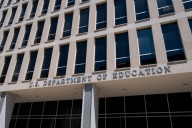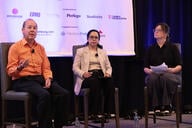You have /5 articles left.
Sign up for a free account or log in.
The federal government’s primary accountability rule for colleges and universities measures the loan defaults in a cohort of student borrowers within three years of entering repayment.
For borrowers who entered repayment in 2012, more than 10 percent had defaulted on their loans within three years. But newly released federal data show that the share of borrowers in default continues to climb after that three-year window -- indicating that current rules mask an even bigger problem over the long term.
Five years into repayment, closer to 16 percent of borrowers were in default, wrote Ben Miller, senior director for postsecondary education at the Center for American Progress, in The New York Times. That means an additional 841,000 students defaulted over two years. Miller obtained the new data from the Education Department through a Freedom of Information Act request.
The data also show the number of institutions with “high” default rates for that 2012 cohort -- 30 percent or higher -- jumped from 93 colleges from year three to 636 in year five of repayment.
Most loan defaults were concentrated in the for-profit sector. Nearly a quarter of all for-profit college students who entered repayment in 2012 had defaulted within five years, the new data show.
Colleges can be cut off from the federal student loan program if their default rate is higher than 30 percent in three consecutive years or 40 percent in a single year. But as a Government Accountability Report released in April showed, institutions can game the cohort default rate benchmark by steering borrowers toward options like loan deferment or forbearance.
Miller wrote that a reauthorization of the Higher Education Act should hold colleges accountable for loan repayment rates, not just default rates, and that student loan outcomes should be assessed over the longer five-year window.




